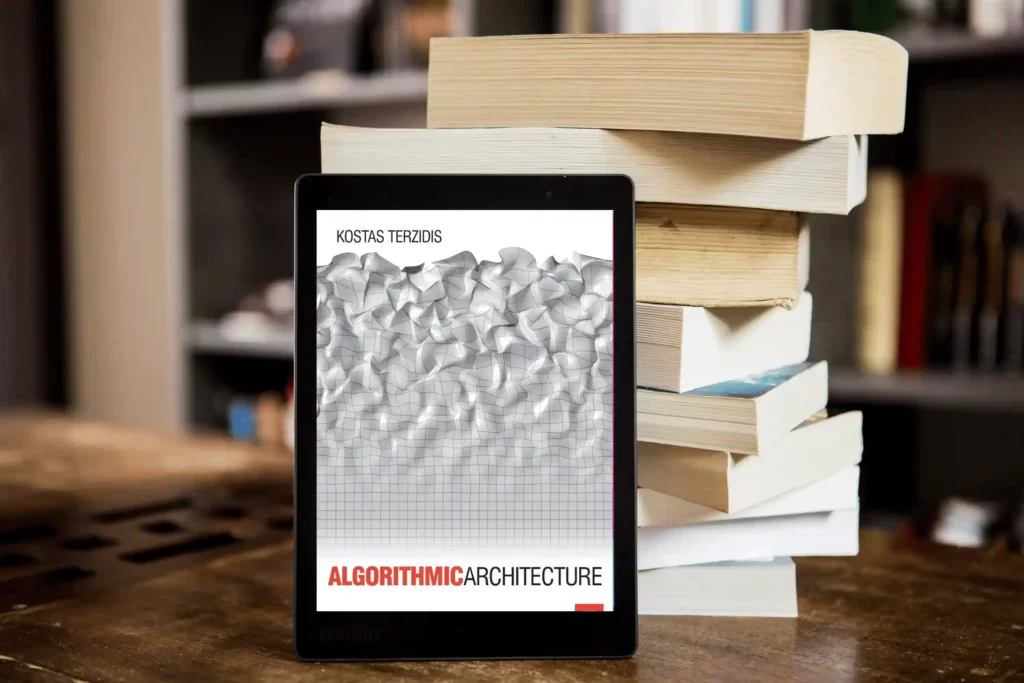
In the rapidly evolving landscape of architecture and design, the integration of computational tools has become paramount. As technology continues to shape our world, architects and designers are embracing computational design to unlock new levels of creativity, efficiency, and innovation. Whether you’re a seasoned professional or an aspiring enthusiast, these top books on computational design will guide you through the intricacies of this dynamic field.
Exploring the Intersection of Technology and Creativity in Architectural Evolution
1. “Computational Design Thinking: Computation Design as a Reflective Practice” by Dr. Mark Burry
Dr. Mark Burry, a pioneering figure in the field of computational design, delves into the intersection of technology, creativity, and architecture. This book offers a profound exploration of how computational tools can enhance design thinking and foster a deeper connection between architects and their creations. Through practical insights and reflective exercises, Burry invites readers to embrace computation as a powerful tool for design evolution.
2. “Generative Design: Form-Finding Techniques in Architecture” by Asterios Agkathidis
Asterios Agkathidis introduces readers to the world of generative design, where algorithms and data-driven processes lead to the creation of innovative architectural forms. This book showcases a collection of projects that exemplify the marriage between computational thinking and design aesthetics. From parametric modeling to algorithmic exploration, Agkathidis offers a comprehensive guide to mastering generative design principles.
3. “Digital Fabrication in Architecture, Engineering, and Construction” by Luca Caneparo and Davide Simeone
In the realm of computational design, digital fabrication plays a pivotal role in transforming virtual concepts into tangible structures. Luca Caneparo and Davide Simeone offer a comprehensive guide to the practical implementation of digital fabrication techniques in architecture, engineering, and construction. From 3D printing to robotic fabrication, this book equips readers with the knowledge needed to bridge the gap between digital models and physical reality.
4. “Architectural Intelligence: How Designers and Architects Created the Digital Landscape” by Molly Wright Steenson
Molly Wright Steenson’s book takes a historical journey through the evolution of computational design, tracing the roots of digital architecture and its impact on the built environment. By examining the works of visionary architects and designers, Steenson sheds light on the transformative role of computation in reshaping our understanding of space, form, and function.
5. “The Autopoiesis of Architecture: A New Framework for Architecture” by Patrik Schumacher
Patrik Schumacher, a prominent advocate of parametricism and computational design, presents a groundbreaking framework for understanding architecture’s self-organizing nature. Exploring the concept of autopoiesis, Schumacher proposes a new way of conceiving architectural design as a responsive and adaptive system. This book challenges conventional design approaches and inspires readers to embrace the potential of computational tools for generative design.

6. “Algorithmic Architecture” by Kostas Terzidis
Kostas Terzidis delves into the theoretical foundation of algorithmic architecture, providing readers with a deep understanding of the mathematical concepts that underpin computational design. Through insightful explanations and thought-provoking examples, Terzidis guides architects and designers in harnessing the potential of algorithms to shape spatial compositions and structural systems.
7. “Architectural Design with SketchUp: Component-Based Modeling, Plugins, Rendering, and Scripting” by Alexander C. Schreyer
Alexander C. Schreyer’s book focuses on harnessing the power of SketchUp, a widely used 3D modeling software, for computational design endeavors. With a hands-on approach, this book teaches readers how to leverage plugins, scripts, and parametric components to create intricate architectural designs. From conceptualization to visualization, Schreyer’s insights empower designers to elevate their SketchUp skills.
8. “The Fourth Industrial Revolution” by Klaus Schwab
While not solely focused on computational design, Klaus Schwab’s book explores the profound impact of emerging technologies, including computation, on various industries. Understanding the broader context of the fourth industrial revolution can provide architects and designers with insights into the interconnectedness of computational design with other transformative trends.
Conclusion
As architecture and design continue to be reshaped by technological advancements, computational design emerges as a powerful avenue for innovation and expression. These top books offer a diverse range of perspectives, from theoretical foundations to practical applications, guiding readers through the exciting landscape of computational design.
Whether you’re intrigued by generative algorithms, parametric modeling, or the integration of technology in architectural practice, these books will inspire you to embark on a journey of creativity and discovery. Embrace the call to action to explore the limitless possibilities that computational design holds for the future of architecture.
For more SketchUp tutorials you can check out https://www.sketchupguru.com/blog/
You can also check more tutorial videos for sketchup on our YouTube Channel,
https://www.youtube.com/c/SketchupGuru
To know about the Top Online 3D Rendering Courses for 2022 click,













